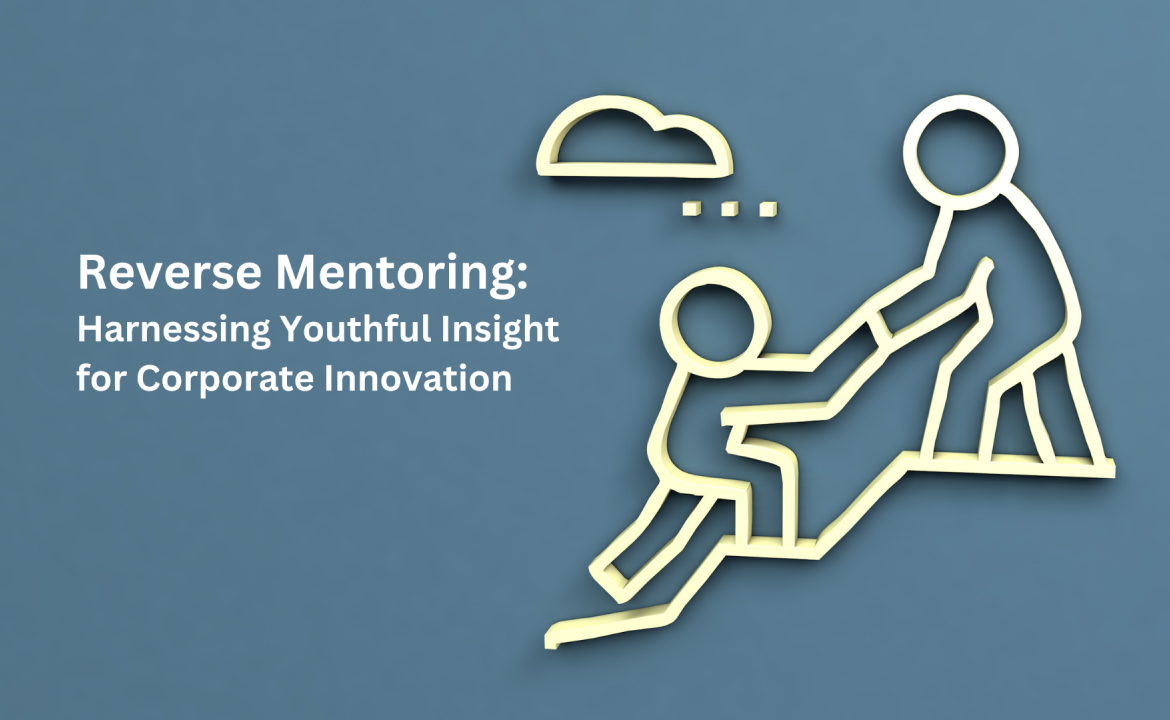Reverse Mentoring: Harnessing Youthful Insight for Corporate Innovation
In today’s rapidly evolving business landscape, technology has become more than just an enabler – it’s a major disruptor reshaping industries at an unprecedented pace. From artificial intelligence revolutionizing customer service to blockchain transforming supply chain management, companies are compelled to adapt swiftly or risk obsolescence. As Peter Drucker wisely stated, “The greatest danger in times of turbulence is not the turbulence itself, but to act with yesterday’s logic.” To navigate this dynamic environment, organizations are turning to innovative strategies like reverse mentoring. This approach not only bridges the generational divide but also infuses fresh perspectives essential for staying competitive in a tech-driven world.
Reverse mentoring flips the traditional mentorship model by having younger, tech-savvy employees mentor senior executives. This setup acknowledges that while experienced leaders possess deep industry knowledge, younger employees often have a stronger grasp of emerging technologies, digital trends, and contemporary cultural shifts. In an era where understanding these elements is crucial for strategic decision-making, reverse mentoring becomes a vital tool.
How Corporates Can Benefit from Reverse Mentoring
In an era where knowledge is as diverse as the workforce, reverse mentoring emerges as a strategic tool for corporations to harness untapped potential. By flipping the traditional mentorship model, companies can leverage the unique skills and insights of their younger employees to drive growth and innovation.
- Accelerated Digital Transformation: Senior leaders gain firsthand insights into new technologies and digital platforms, enabling more informed strategic initiatives. 2.
- Enhanced Innovation: Exposure to fresh ideas from younger employees can spark creativity and lead to innovative solutions. 3.
- Improved Market Relevance: Understanding the preferences and behaviours of younger demographics helps tailor products and services to current market demands.
- Strengthened Employee Engagement: Fostering a culture of open communication across hierarchical levels boosts morale and retention. 5.
- Diversity of Thought: Encouraging diverse perspectives leads to more comprehensive problem-solving and decision-making.
Ways to Engage with Startups
Engaging with startups is another avenue through which corporations can stay ahead of the curve. Startups often operate on the cutting edge of technology and innovation, making them valuable partners for established companies looking to disrupt rather than be disrupted.
- Corporate Incubators and Accelerators: Establish programs that support startups with resources and mentorship, creating a pipeline for innovative ideas. 2.
- Strategic Partnerships: Collaborate with startups on projects that align with corporate goals, leveraging each other’s strengths. 3.
- Investments and Acquisitions: Invest in or acquire startups to incorporate cutting-edge technologies and talent into the corporate structure. 4.
- Innovation Challenges and Hackathons: Host events that invite startups to solve specific business challenges, fostering a spirit of innovation.
Benefits of Reverse Mentoring
Understanding the full spectrum of benefits that reverse mentoring offers can motivate organizations to adopt this practice more readily. It’s not just about knowledge transfer; it’s about cultivating a culture that thrives on continuous learning and adaptability.
- Agility and Adaptability: Organizations become more responsive to market changes by embracing new technologies and methodologies.
- Cultural Integration: Breaking down generational barriers fosters a more inclusive and cohesive workplace culture.
- Leadership Development: Both mentors and mentees enhance their leadership and communication skills through the mentoring process.
- Customer Insight: Gaining a deeper understanding of younger consumers can inform marketing and product development strategies.
Things to Avoid in Reverse Mentoring
While reverse mentoring has numerous benefits, it’s essential to approach it thoughtfully to maximize its effectiveness. Being aware of common pitfalls can help organizations implement successful programs.
- One-Sided Relationships: Ensure that the mentoring is reciprocal, with both parties contributing and learning. 2.
- Lack of Clear Objectives: Define specific goals to give the mentoring relationship purpose and direction.
- Ignoring Confidentiality: Establish trust by respecting sensitive information shared during mentoring sessions. 4.
- Resistance to Change: Senior leaders should remain open-minded and willing to challenge their own assumptions.
Steps to Set Up a Successful Reverse Mentoring Program
Implementing a reverse mentoring program requires careful planning and execution. By following structured steps, organizations can create meaningful and productive mentoring relationships that drive tangible results.
- Define Clear Objectives: Establish what the organization aims to achieve through reverse mentoring, such as digital literacy among leadership or cultural integration.
- Select the Right Participants: Carefully choose mentors and mentees based on skills, openness to learning, and compatibility.
- Provide Training and Guidelines: Equip participants with the necessary tools and frameworks to engage effectively, including communication skills and confidentiality protocols.
- Set a Structured Framework: Define the frequency of meetings, expected outcomes, and duration of the mentoring relationship.
- Encourage Open Communication: Foster an environment where both parties feel comfortable sharing insights and feedback.
- Monitor and Evaluate: Regularly assess the program’s progress and impact, making adjustments as needed to enhance effectiveness.
- Celebrate Successes: Acknowledge and reward milestones and achievements to motivate continued engagement.
Conclusion
In an age where “disrupt or be disrupted” is the prevailing business mantra, reverse mentoring offers a strategic advantage. By harnessing the diverse strengths within an organization, companies can foster a culture of continuous learning and adaptability. As Jack Welch famously said, “An organization’s ability to learn, and translate that learning into action rapidly, is the ultimate competitive advantage.”
By embracing reverse mentoring, organizations not only equip their leaders with critical new skills but also empower the next generation of talent. It’s a forward-thinking approach that aligns with the fast-paced, tech-centric world of modern business.
#AskKashyap #startup #mentoring #reversementoring #innovation #syncoro

